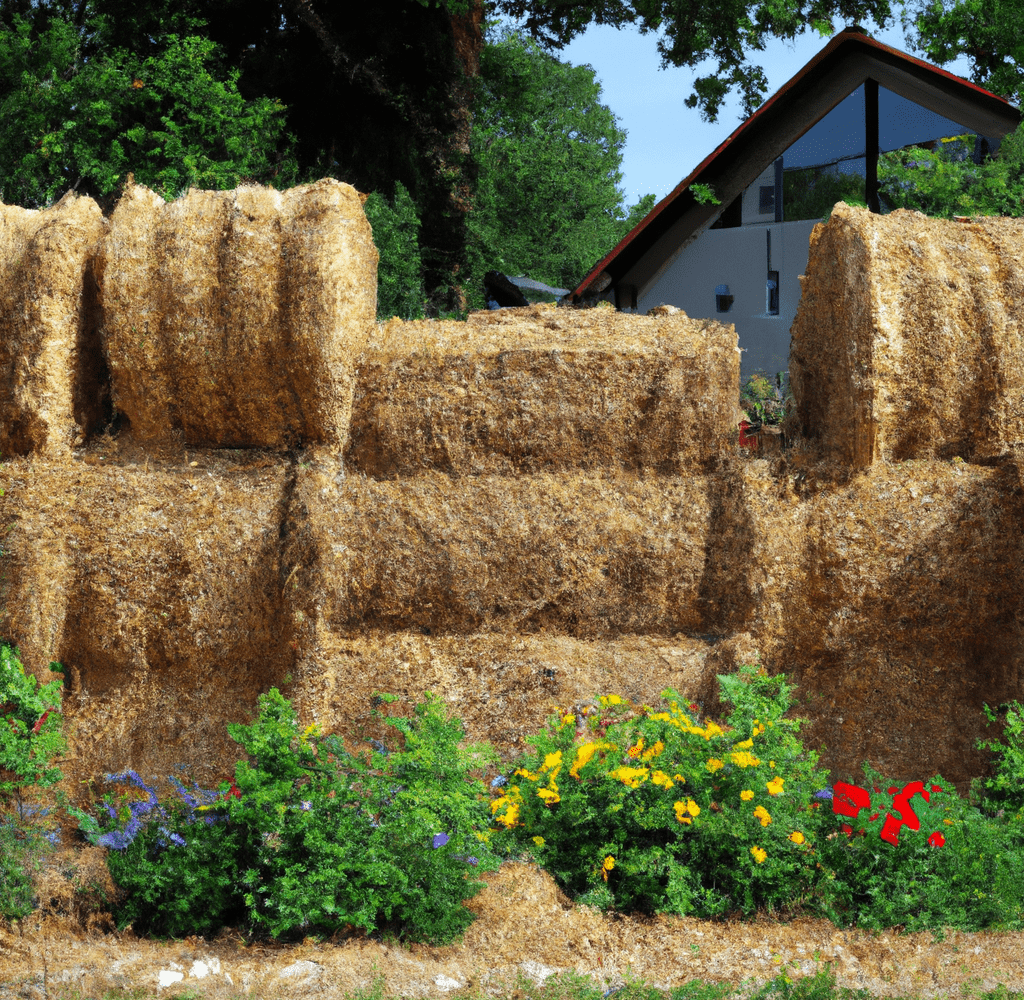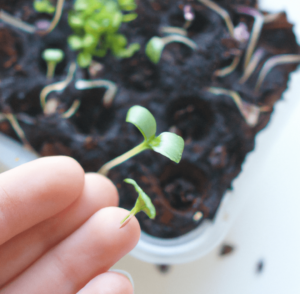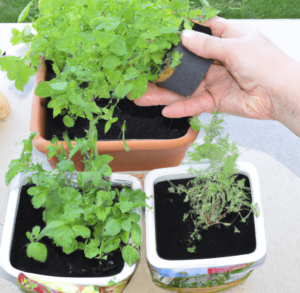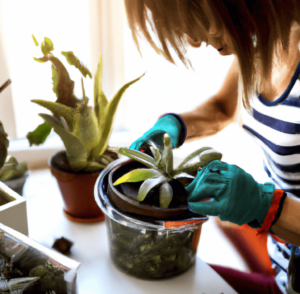Have you ever heard of straw bale gardening? If not, you’re in for a treat! Straw bale gardening is a unique and easy way to grow a variety of crops in your backyard, even if you don’t have a lot of space or soil to work with.
In a straw bale garden, the bales of straw serve as the “soil” for the plants. The bales are first prepared by watering them and adding nutrients to help them decompose and become suitable for growing crops. Once the bales are ready, seeds or seedlings can be planted directly into the bales and will grow just like they would in a traditional garden.
One of the biggest benefits of straw bale gardening is that it allows people with limited space or poor soil quality to still have a successful garden. The bales can be placed on a patio, driveway, or even on top of a roof if there is enough sunlight. Straw bale gardening is also a great option for people who have physical limitations that make it difficult to bend down and tend to a traditional garden.
While any type of straw can be used for straw bale gardening, wheat straw is typically the most commonly used because it decomposes easily and provides the necessary nutrients for plant growth.
Overall, straw bale gardening is a creative and accessible way for anyone to have a thriving garden, no matter their living situation or gardening experience. So why not give it a try and see how it can work for you?

Hay Bales vs. Straw Bales in Gardening
While straw bales are the most commonly used type of bale in straw bale gardening, hay bales can also be used. However, there are some key differences to consider when deciding which type of bale to use in your garden.
One of the main differences between hay bales and straw bales is the type of plant they come from. Straw bales are made from the stalks of grain plants, such as wheat or oats, while hay bales are made from the dried grasses of fields. This means that straw bales contain fewer seeds and are generally cleaner than hay bales, which can contain a variety of weeds and seeds.
Another difference to consider is the nutritional content of the bales. Straw bales tend to have a higher nutrient content, which makes them more suitable for planting and growing crops. Hay bales, on the other hand, are lower in nutrients and may require more fertilization in order to support plant growth.
In terms of cost, hay bales are generally cheaper than straw bales due to the abundance of grasses and the lower demand for them. However, the extra cost of straw bales may be worth it for the higher nutrient content and cleaner material.
Ultimately, the choice between hay bales and straw bales in gardening comes down to personal preference and the specific needs of your garden. Both types of bales can be used in straw bale gardening, but it’s important to understand the differences and how they may affect the success of your garden.
Straw Bales in Gardening: The Benefits and How to Use Them
Straw bales are a unique and easy way to create a garden, even if you don’t have a lot of space or soil to work with. Here are some of the benefits of using straw bales in your garden and how to get started.
One of the biggest benefits of straw bale gardening is the ability to grow crops in a small space or in an area with poor soil quality. The bales can be placed on a patio, driveway, or even on top of a roof if there is enough sunlight. This makes straw bale gardening a great option for people who live in apartments or have limited outdoor space.
Another benefit of straw bale gardening is the ease of use. The bales are lightweight and can be moved around easily, so you can rearrange your garden or move it to a new location if needed.
To get started with straw bale gardening, the first step is to prepare the bales. This involves watering the bales and adding nutrients to help them decompose and become suitable for growing crops. Once the bales are ready, you can plant seeds or seedlings directly into the bales and care for them just as you would in a traditional garden.
Overall, straw bale gardening is a fun and accessible way to have a successful garden, no matter your living situation or gardening experience. Give it a try and see how it can work for you!
Gardening with Straw Bales: Tips and Techniques
Gardening with straw bales is a fun and easy way to grow a variety of crops, even if you don’t have a lot of space or soil to work with. Here are some tips and techniques to help you get started and have a successful straw bale garden.
One important factor to consider when gardening with straw bales is the location of your garden. Make sure the bales are placed in an area that gets plenty of sunlight, as most plants need at least six hours of direct sunlight per day to thrive. You should also choose a location that is close to a water source, as the bales will need to be watered regularly.
Before planting, it’s important to properly prepare the bales. This involves watering the bales and adding nutrients to help them decompose and become suitable for growing crops. You can also add a layer of compost or well-rotted manure on top of the bales to add extra nutrients.
When planting in straw bales, it’s important to choose the right type of plants. Most vegetables, herbs, and flowers will grow well in straw bales, but it’s best to avoid plants with deep roots, such as tomatoes or carrots, as they may struggle to grow in the bales.
Once your plants are in the ground, take care of them just as you would in a traditional garden. Water regularly, fertilize as needed, and weed the bales to keep them healthy and thriving.
With a little care and attention, your straw bale garden will be a success!
Creating a Straw Bale Garden: From Preparation to Planting
Creating a straw bale garden is a fun and easy way to grow a variety of crops, even if you don’t have a lot of space or soil to work with. Here’s a step-by-step guide to help you get started.
- Choose your bales: Wheat straw bales are the most commonly used type of bale in straw bale gardening, but other types of straw can also be used. Make sure to choose bales that are fresh and free of weeds and seeds.
- Prepare the bales: Before planting, it’s important to properly prepare the bales. This involves watering the bales and adding nutrients, such as compost or well-rotted manure, to help them decompose and become suitable for growing crops. This process can take anywhere from one to four weeks, depending on the weather and the condition of the bales.
- Choose your plants: Most vegetables, herbs, and flowers will grow well in straw bales, but it’s best to avoid plants with deep roots, such as tomatoes or carrots, as they may struggle to grow in the bales.
- Plant your seeds or seedlings: Once the bales are ready, you can plant seeds or seedlings directly into the bales. Make sure to follow the recommended planting depths and spacing for the specific plants you are using.
- Fertilize and water: As your plants grow, make sure to fertilize and water them regularly to keep them healthy and thriving. You may also need to weed the bales to keep them free of weeds.
With a little care and attention, your straw bale garden will be a success!

Using Straw Bales in Your Garden: Best Practices
Straw bales can be a great addition to your garden, providing a unique and easy way to grow a variety of crops. Here are some best practices to keep in mind when using straw bales in your garden.
- Choose the right type of bale: Wheat straw bales are the most commonly used type of bale in straw bale gardening, but other types of straw can also be used. Make sure to choose bales that are fresh and free of weeds and seeds.
- Prepare the bales properly: Before planting, it’s important to properly prepare the bales. This involves watering the bales and adding nutrients, such as compost or well-rotted manure, to help them decompose and become suitable for growing crops. This process can take anywhere from one to four weeks, depending on the weather and the condition of the bales.
- Choose the right plants: Most vegetables, herbs, and flowers will grow well in straw bales, but it’s best to avoid plants with deep roots, such as tomatoes or carrots, as they may struggle to grow in the bales.
- Fertilize and water regularly: As your plants grow, make sure to fertilize and water them regularly to keep them healthy and thriving. You may also need to weed the bales to keep them free of weeds.
- Keep an eye on the bales: As the bales decompose, they may begin to shrink or sink. If this happens, you may need to add more bales or additional support to keep your plants upright.
By following these best practices, you can have a successful straw bale garden and enjoy a bounty of fresh, homegrown produce.
If you are interested in the purpose of gardening, you might also be interested in what is square foot gardening and what is raised bed gardening.
Bottom Line: Straw Bale Gardening is Environmentally Friendly
Straw bale gardening is a method of growing plants using straw bales as the primary growing medium instead of soil. The bales are typically soaked in water and fertilized to create a suitable environment for plant growth. This method can be a good alternative for gardeners with poor soil quality or limited space. It can also be a more environmentally friendly option, as it reduces the need for tillage and can help to conserve water.
If you are interested in the purpose of gardening, you might also be interested in what is square foot gardening and what is raised bed gardening.







